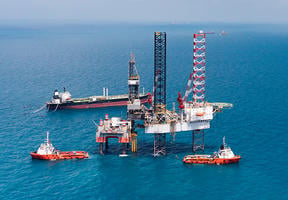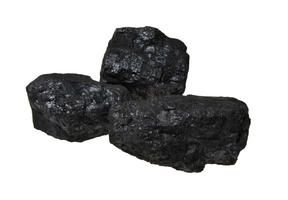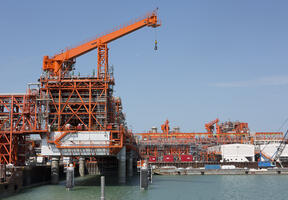Update on Carbon Capture and Storage
10 min read

Florence Delprat-Jannaud
To Win the Climate Battle, We Must Use Every Technical Resource Available to Us
A series of coordinated actions will be required to keep below 2°C (or preferably 1.5°C) by the end of the century. Carbon capture, utilization and storage (CCUS) is one possible solution. Florence Delprat-Jannaud, “Carbon Capture and Storage” Program Manager at IFPEN, offers her analysis.
What Is Carbon Neutrality?
International efforts to combat will only achieve results if we effectively control greenhouse gas emissions from human activities, first and foremost CO2 emissions from industrial smokestacks and energy production. The first step is “carbon neutrality”.
But what is carbon neutrality? It means having a balance between the greenhouse gases released into the atmosphere (through energy production, transportation, housing, industrial and agricultural processes, land use change, etc.) and those absorbed by the planet, particularly via carbon “sinks” (such as plants, soils and oceans).
To achieve such a balance, there are two possible – and complementary – approaches:
- Reducing emissions by limiting the use of fossil fuels while expanding that of renewable energies and by improving the of factories and farming.
- Increasing the absorption capacity of the planet by limiting deforestation and marine pollution or – in the future – by storing CO2 underground after human intervention.
Different Resources Available
To achieve carbon neutrality by 2050, we have no choice but to use each and every resource available to us. We cannot play one solution off against another or rule out one approach on the pretext that another is more effective, as that would be counterproductive to the goal of limiting global warming.
Based on the work of the Intergovernmental Panel on Climate Change (IPCC), the has defined a series of scenarios aimed at limiting global warming to 2°C, or preferably 1.5°C, by 2100, taking into account all the solutions available to us.
Under the 2°C scenario, we must be 80% of the way to carbon neutrality by 2050. Energy efficiency (using less energy in our daily lives and in industry) could provide almost 42% of the effort needed, with renewables and continued use of nuclear contributing a further 34% and 6%, respectively. CCUS could deliver a significant 7% to 10%. To limit the average increase in global temperatures to 1.5°C by 2050, the contribution of CCUS would have to increase to 32%. In any event, climate objectives are unattainable without CCUS.
CCUS is only one of the solutions available to us, but with the advantage that it can be implemented much faster than any of the others. It requires neither industrial facilities to be completely replaced nor entire energy distribution networks to be adapted. Naturally, to have an impact on the climate, we must be able to deploy CCUS on a very large scale.
Huge Carbon Capture Needs
Today, there are some 20 major-sized facilities that can store around 37 million metric tons of CO2 per year. To meet the climate objectives, we must be able to store around 5 gigatons by 2050. From 37 million to 5,000 million, we are a huge way off! Significant financing will be required to achieve the jump.
Most research currently being conducted around the world is aiming to develop more costeffective processes, especially for the capture phase, which is the most expensive and can represent up to 70% of the total cost.
Today, carbon capture concerns the biggest greenhouse gas emitters – steel and cement works and thermal plants. The technology is even more complex and more expensive for small emitters, as the CO2 is more diluted in flue gases.
Securing financing for such large-scale operations is difficult, as the price per metric ton of carbon is too low to trigger a “polluter pays” mechanism. No value is given to the of greenhouse gas emissions and, as things stand, storing CO2 underground therefore brings no tangible benefits to those who actually take the trouble.
Furthermore, CCUS must be included in the product life cycle and assessed not only in economic terms but also based on the environmental impact of the product.
All industrial sectors therefore have a role to play and considerable innovation is required at all levels.
A graduate of École Normale Supérieure de Cachan, Florence Delprat-Jannaud is “Carbon Capture and Storage” and “Subsoil Management for New Energy Technologies” Program Manager at . Founded as the French Institute of Oil, IFPEN is a public organization with a leading role in research and training in the areas of energy, transportation and the environment.

David Nevicato
Carbon Storage: Essential Technology
Although carbon storage is recognized by experts around the world as a solution to the accumulation of greenhouse gas in the atmosphere, it is still not fully understood by members of the public, who wonder about the technique and its environmental impacts. David Nevicato, Head of the Total Group’s “Carbon Capture, Utilization and Storage” research program, explains.
Carbon storage is an integral part of the carbon neutrality goal, which itself is central to the fight against climate change. Without carbon storage, carbon neutrality cannot be achieved by 2050. Carbon capture, utilization and storage (CCUS) has a role to play once greenhouse gas emissions have been reduced to the absolute minimum through, in particular, energy efficiency and use of renewable energies.
Even the most optimistic scenarios put forward by international organizations such as the IPCC or the IEA1 agree that, to maintain or develop economic activity, we will require large amounts of energy, particularly from fossil fuels, as well as raw materials such as steel and cement. However, these heavy industries produce, by their very nature, emissions independent of the energy source used. For example, the process of converting calcium carbonate into lime for cement production releases CO2 into the atmosphere.
Moreover, IPCC projections tell us that it will not be enough to simply achieve carbon neutrality, that is, to stop CO2 emissions entirely. It will also be necessary to capture carbon that we have released into the atmosphere over the past hundreds of years.
Carbon Utilization Has Its Limits
What should be done once CO2 has been collected? One solution is to extract the carbon and utilize it in the chemical and materials industries, rather than deriving carbon from hydrocarbons and .
It can also be reacted with “green” (obtained though water electrolysis using ) to produce , which can serve, for example, as a fuel source in industries such as long-haul shipping.
By the CO2 recovered from industry or collected in the atmosphere, we can produce more sustainable products that are better for the environment. However, CO2 recycling creates an additional need for carbon-free energy. The production cost for products that use recycled CO2 will therefore depend greatly on the price of green . If it is too expensive, low-carbon products made using recycled CO2 will not be competitive with hydrocarbon-based equivalents.
Ultimately, recycling CO2 will contribute to reducing carbon emissions, but estimated volumes will, at best, be measured in hundreds of millions of metric tons of CO2 per year. Meanwhile, IPCC projections indicate that several billions of tons of carbon will need to be removed from the atmosphere to keep global warming below 2°C, if not 1.5°C. It will therefore be necessary to come up with larger-scale solutions to stop CO2 from reentering the atmosphere.
Potential of Geological Carbon Storage
Carbon storage has been going on for over 20 years, in particular in the North Sea and the United States. Empty oil and gas reservoirs offer excellent safety conditions for carbon storage in terms of geological time, or over thousands of years. It is noteworthy that none of the existing storage facilities have ever recorded a leak.
It should be emphasized that, contrary to popular belief, CO2 is not injected into the Earth in gaseous form but instead in its liquid or “supercritical” state. The pressure at over 1,000 meters below the surface maintains it in this form. CO2 is not stored in rock cavities but rather in sands or porous rock formations. Over the course of several decades, it undergoes mineralization, therefore eliminating the risk of leaks.
Storage of CO2 on a very large scale would require into vast saline aquifers2 over 1,000 meters underground and, in addition, under several hundred meters of water if they are at sea. The first step is to identify deep aquifers that could be used to store CO2 without risk of it making its way into other reservoirs or back into the atmosphere. We must also ensure that CO2 injection does not result in any geological movement. Simulations run on increasingly powerful computers allow us to see how carbon will change in geological formations over several hundreds of years. Satellite images and sensors installed on drones or remotely operated underwater vehicles would be able to rapidly locate any leakage.
New projects are underway3 but, as is the case for solar and wind farms, local stakeholders need to be convinced of the technology’s safety, the lack of noise, visual or other pollution, and the direct and indirect benefits.
Today, projects of this kind are unviable without substantial public intervention. This is where a sufficiently high global carbon price could play a major role.
A Ph.D. in process engineering (Université Claude Bernard, Lyon) and an engineering graduate from École Nationale Supérieure des Industries Chimique (ENSIC) in Nancy, David Nevicato is the Head of the Total Group’s “Carbon Capture, Utilization and Storage” research program.
- IPCC: Intergovernmental Panel on Climate Change. IEA: International Energy Agency.
- Geological formations made up of porous sedimentary rocks containing salt water.
- An international project is underway in Norway whereby CO2 captured at industrial sites will be transported by ship to a receiving terminal on the west coast of the country. It will then be piped to underwater injection wells located to the east of the Troll gas field in the Norwegian North Sea. The site is initially expected to accommodate 1.5 million metric tons of carbon a year, with a final capacity of 5 million metric tons per year.






















